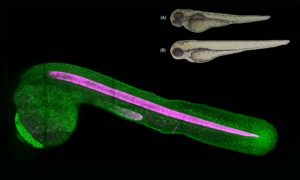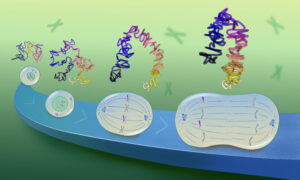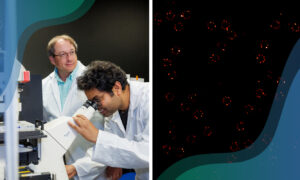
Cells grow pores from shrinking holes
New research shows how pores form in the membrane that surrounds a cell’s nucleus

The nucleus of a cell is an exclusive place. Certain molecules are granted access by the pores in the surrounding membrane while others are kept out. A new study by EMBL researchers, published in Nature Structural & Molecular Biology reveals how these critical structures form. Study author Shotaro Otsuka explains why the findings are important for the field and could provide insight into how to treat health conditions such as cancer and immune and nervous system disorders.
What did you find?
We found that following cell division in human cells, the nuclear membrane, a protective cover for the cell’s nucleus, and the pores within that membrane form in an unexpected way. Before a cell undergoes division, the nuclear membrane disassembles. After division, it begins to reform, enveloping the DNA. At this point, the nuclear membrane has thousands of holes that all start to shrink. But only some of these holes close up completely – others stop shrinking and start to expand. We found that the expanding holes gradually accumulate a collection of key proteins known as the nuclear pore complex until they form fully matured pores.
“I was surprised to find that 2,000 pores reform in only three minutes”
Combining live cell imaging with high resolution 3D electron microscopy in collaboration with Martin Beck’s and Yannick Schwab’s group made it possible to visualise the process through which these membranes and pores form within the cells themselves – something that hasn’t been possible before using existing methods. I was surprised to find that 2,000 pores reform in only three minutes, and that the process of their formation is totally distinct from a known pore formation process occurring later during cell growth that takes much longer – about an hour.
Why is this important?
Nuclear pores are the crucial passageways in the nuclear membrane, which is the barrier between DNA – the cell’s genetic material – and the rest of the cell. Like a turnstile at a movie theater, which only allows people with a valid ticket through, nuclear pores control which molecules are allowed to pass into and out of the nucleus. When the nuclear pores don’t form properly, they may not function correctly. This can lead to cancer as well as immune and nervous system disorders. Our findings provide a better understanding of how these critical structures form and will hopefully aid in improving treatments for these health conditions in the near future.


